Colombia’s Top 20
Cartagena’s Old Town
The hands of the clock on the Puerta del Reloj wind back 400 years in an instant as visitors enter the walled old town of Cartagena. A stroll down the streets here is a step into the pages of a Gabriel García Márquez novel. The pastel-toned balconies overflow with bougain-villea and the streets are abuzz with food stalls around magnificent Spanish-built churches, squares and historic mansions. This is a living, working town that just happens to look a lot like it did centuries ago.
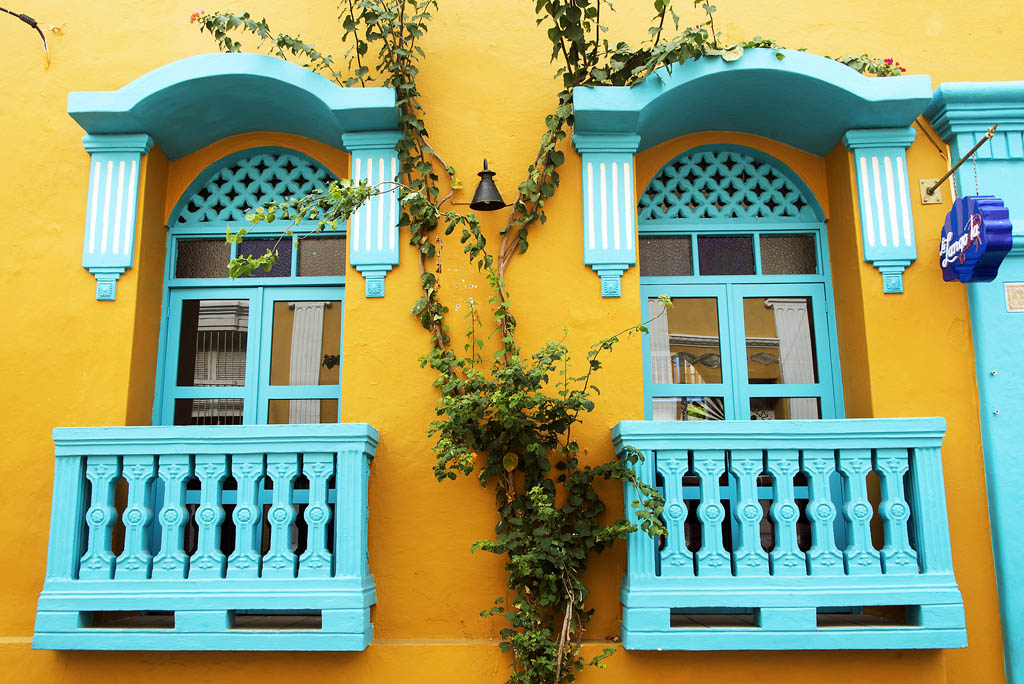
Top Experiences
Journey to Ciudad Perdida
The trip to Ciudad Perdida is a thrilling jungle walk through some of the country’s most majestic tropical scenery. It has become renowned as one of Colombia’s best multiday hikes. Surging rivers pump faster than your pulse can keep pace as you ford them, waist deep, against the otherwise quiet beauty of the Sierra Nevada. Your destination is awe-inspiring – an ancient lost city ‘discovered’ by graverobbers and gold-digging bandits deep in the mountains, laid out in mysterious, silent terraces – but it’s as much about the journey itself.

Top Experiences
La Guajira’s Dunes & Deserts
Reaching this remote desert peninsula may be fun or arduous, depending on how you like to travel, but everyone who makes it to South America’s most northerly point is blown away by the stunning simplicity of it all. Pink flamingos, mangrove swamps, sand-dune beaches and tiny Wayuu settlements dot the vast emptiness of this most magnificent and little-visited corner of Colombia. Come here to swap the noise of cities for the reverent silence of nature.

Top Experiences
Caño Cristales
Community-run, sustainable tourism at its best can be found at the Parque Nacional Natural Sierra de la Macarena in Los Llanos, where one of Colombia’s most fascinating natural wonders, the multihued rivers and streams of Caño Cristales, thrill all who visit. This network of remote rivers explodes into an astonishing sea of red for a few months between July and November, a phenomenon caused by an eruption of kaleidoscopic plants. Trekking between waterfalls and natural swimming pools is a fabulous experience.
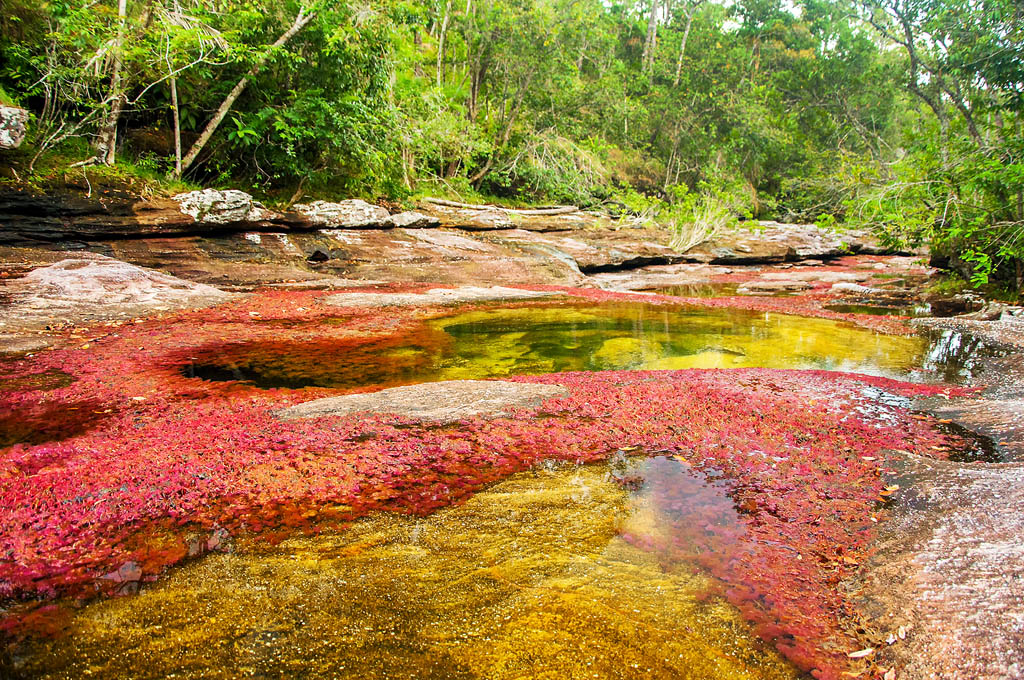
Top Experiences
Ancient Statues of San Agustín
Scattered among rolling green hills, the statues of San Agustín are a magnificent window into pre-Columbian culture and one of the most important archaeological sights on the continent. More than 500 of these monuments, carved from volcanic rock and depicting sacred animals and anthropomorphic figures, have been unearthed. Many statues are in an archaeological park, but many more are in situ, and can be explored on foot or by horseback along canyon trails.

Top Experiences
Whale-Watching on the Pacific Coast
There are few sights in nature as impressive as watching a 20-ton whale launch itself through the air against a backdrop of forest-covered mountains. Every year hundreds of humpback whales make a 5000-mile (8000km) journey from the Antarctic to give birth and raise young in Colombia’s Pacific waters. These spectacular mammals come so close to shore in Ensenada de Utría that you can watch them cavorting in shallow waters from your breakfast table.

Top Experiences
Coffee Fincas in the Zona Cafetera
Jump in a classic WWII jeep and go on a caffeine-fueled coffee-tasting adventure. Many of the best fincas (farms) in the Zona Cafetera have thrown open their gates and embraced tourism – eager to show visitors what sets Colombian coffee apart and to share a little of their hardworking culture. Strap on a basket and head into the plantation to pick your own beans before returning to the traditional farmhouse to enjoy the end product, accompanied by the sounds of flowing rivers and birdsong.

Top Experiences
Trekking in El Cocuy
Parque Nacional Natural (PNN) El Cocuy is one of South America’s most coveted stomping grounds – and for good reason. In season (December to February), everything throughout the Sierra Nevada del Cocuy region is characterized by the páramo ecosystem of glacial valleys, mountain plains, high-altitude lakes and rare vegetation, while burnt-auburn sunrises bounce off craggy peaks. On clear days, entire swaths of Los Llanos can be seen before you from any number of surrounding 5000m-high peak viewpoints.

Top Experiences
Museums of Bogotá
There are few places in the world where you can get a sense of what finding a long-lost buried treasure might be like. Bogotá’s Museo del Oro, one of South America’s most astonishing museums, will floor you with a sensation of Indiana Jones proportions – and it’s merely one of countless museums in the city. Whether you dig portly Boteros, presidential helicopters, cocaine-kingpin firearms, Bolivarian swords, exquisitely tiled bathrooms or broken vases, Bogotá has a museum for you.

Top Experiences
Salsa in Cali
Cali may not have invented salsa, but this hardworking city has taken the genre to its heart and made the music its own. Going out in Cali is going out to dance salsa – it’s how caleños express themselves. From the tiny barrio bars with oversized sound systems to the mega salsatecas (salsa dance clubs) of Juanchito, salsa helps to break down social barriers and unites this sprawling city. If you know how to dance, this is the place to show off your moves and, if not, there is no better place to learn.

Top Experiences
Colonial Barichara
There is something immediately transcendent about setting foot in stunning Barichara, arguably Colombia’s most picturesque colonial village: its rust-orange rooftops, symmetrically cobbled streets, whitewashed walls and pot-plant-adorned balconies contrast with a backdrop of cinematic Andean green. Barichara is a slow-paced marvel – its name means ‘place of relaxation’ in the regional Guane dialect – and finding yourself wandering its streets in a sleepwalker’s daze, blindsided by its beauty, wouldn’t be unusual.

Top Experiences
Providencia: Fantasy Island
It might be a little tricky to reach, but the effort pays off before you even land on this mountainous, jaw-droppingly beautiful slice of Caribbean fantasy: the view from the plane or catamaran window is that good. With some of the best beaches in the country, superb diving, excellent hiking, wonderful cuisine and a unique English creole to get your head around, Providencia is a little-explored off-the-beaten path favorite, where you won’t find a single all-inclusive resort.
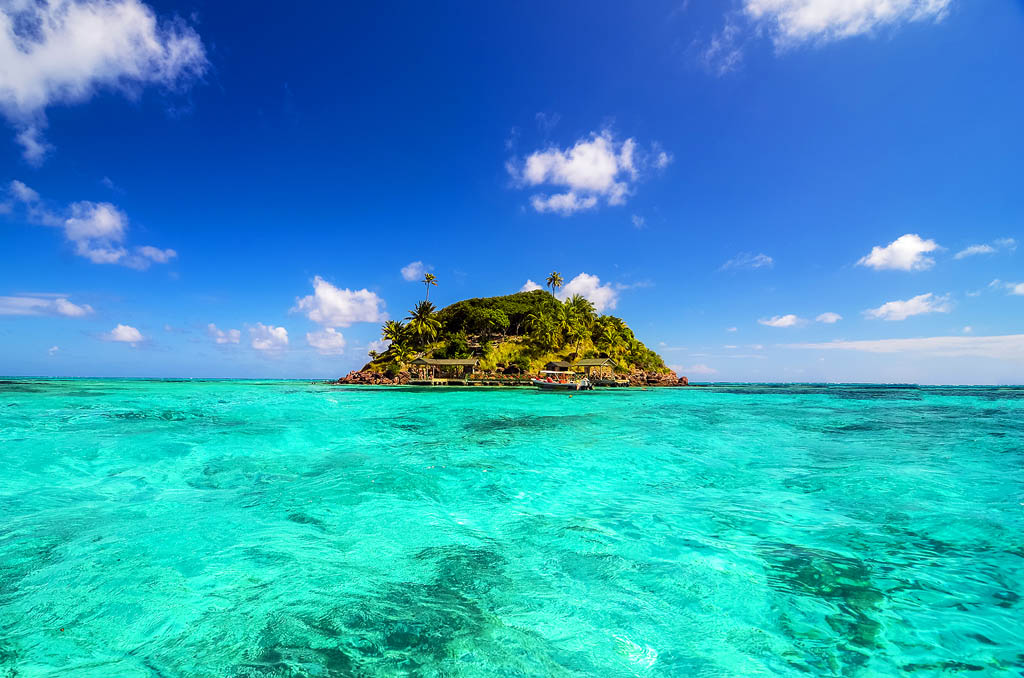
Top Experiences
Colonial Villa de Leyva
Big, wide blue skies hover over the high-altitude valley that forms the backdrop of impressive Villa de Leyva. Just 165km north of Bogotá, Villa is a sleepy colonial village, and has one of the largest and prettiest main squares in the Americas. Lazy Villa and its picturesque center are flush with international gastronomic pleasures, rich history, ancient churches, interesting museums and artisan shopping. You’ll also find a wealth of low-key outdoor adventures in the surrounding countryside.

Top Experiences
Cañon de Río Claro
A majestic canyon carved in marble, the Reserva Natural Cañon de Río Claro is one of Colombia’s top natural destinations and lies just 2km off the main Bogotá–Medellín highway. Through the middle runs a crystal-clear river, which forms numerous refreshing swimming holes. Fly along a zipline over the river; explore bat-filled caves; or just sunbathe on the smooth rocks. In the evening, as the setting sun paints the rocks in warm tones, flocks of birds spring to life and the canyon fills with the sounds of the jungle.

Top Experiences
Beaches of PNN Tayrona
The beaches at Parque Nacional Natural (PNN) Tayrona, near Santa Marta on the Caribbean coast, are among the country’s most beautiful. Tayrona’s limpid waters heave against a backdrop of jungle that sweeps like a leafy avalanche down from the soaring Sierra Nevada de Santa Marta, the world’s highest coastal mountain range. The picturesque white-sand beaches are lined with palm trees and strewn with vast boulders, some cleaved in half, looking as if a giant has had a geological temper tantrum.

Top Experiences
Hiking in PNN Los Nevados
The snow-covered peaks of Parque Nacional Natural (PNN) Los Nevados, have long been revered by indigenous cultures and visitors alike. Covering 583 sq km, the reserve is home to some of the most breathtaking stretches of the Colombian Andes. The southern reaches of the park offer fantastic trekking through diverse ecosystems ranging from humid cloud forests to rare high-altitude páramo. Adventurous hikers can summit both Nevado de Santa Isabel and Nevado del Tolima on one high-altitude adventure.

Top Experiences
Desierto de la Tatacoa
An other-worldly anomaly, the Desierto de la Tatacoa is a striking landscape of ocher and gray sands, sculptured cliffs and clumps of cactus. Surrounded by mountains, the semi-arid landscape sits in a rain shadow formed by the towering Nevado de Huila and is a silent, spiritual place with an ecosystem unlike any other in Colombia. The lack of cloud cover and light pollution make it the best place in the country for stargazing, either with the naked eye or at the local observatory.
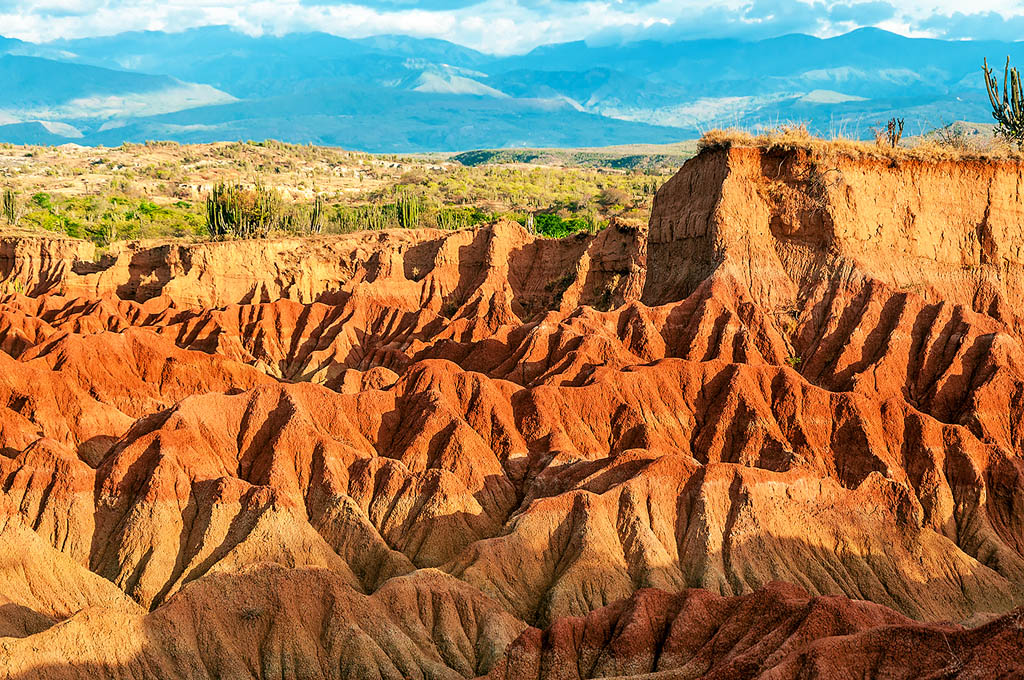
Top Experiences
Wildlife Lodges on the Río Yavarí
The sheer size of the Amazon is nearly incomprehensible until you visit – Colombia’s portion alone is bigger than Germany – so it goes without saying there are many places to bed down on a once-in-a-lifetime trip. But those along the Río Yavarí are among the best places to see a variety of wildlife and ecosystems. Here you can swim with dolphins, fish for piranha and see alligators, monkeys and frogs up close.

Top Experiences
Exploring Medellín
Get a bird’s-eye view of life in the real Medellín as you soar in the city’s award-winning metrocable system above working-class neighborhoods clinging precariously to steep mountainsides. The maze of haphazard red-brick abodes below is the beating heart of a city where difficult terrain is no obstacle to growth. After dark, check out the other end of the spectrum by visiting the chic restaurants, bars and clubs of El Poblado, the center of Medellín’s legendary nightlife and popular with the city’s well-heeled, fashionable crowd.
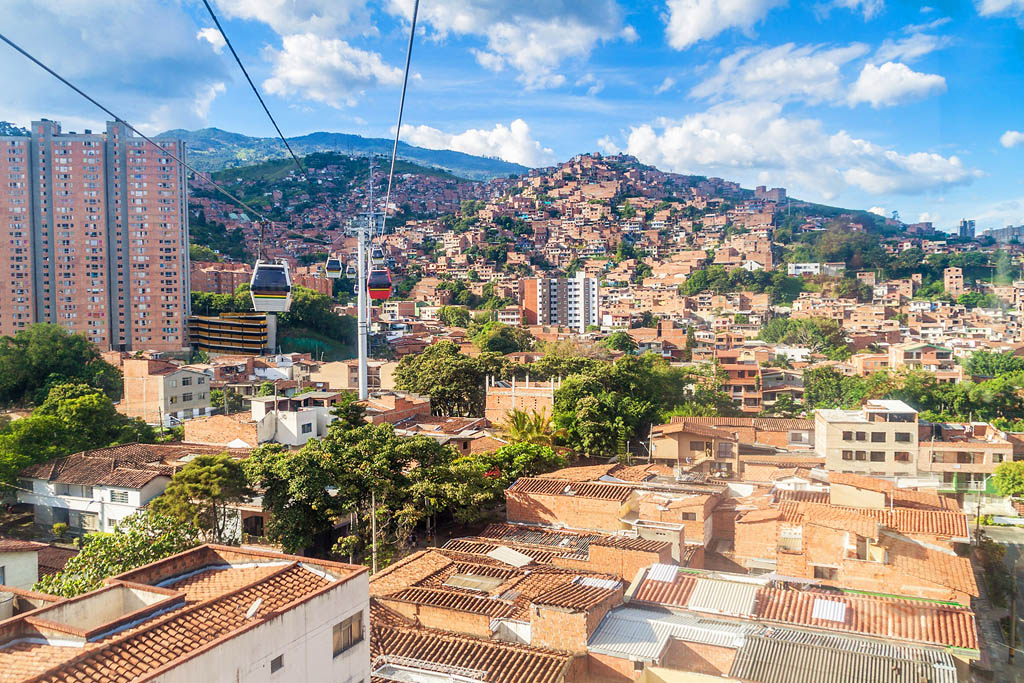
Top Experiences
Outdoor Adventures in San Gil
San Gil isn’t much to look at but what it lacks in natural beauty it more than makes up for in high-octane amusements. Peddle, paddle, rappel, spelunk, bungee or paraglide – whatever your poison – San Gil is Colombia’s go-to outdoor adventure playground. It’s most famous for heart-stopping class IV and V rapids on the Río Suárez, but boasts a résumé far beyond white-water rafting. Get wet, get airborne, get your courage boots on – San Gil will test your limits.
